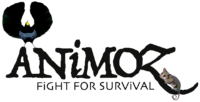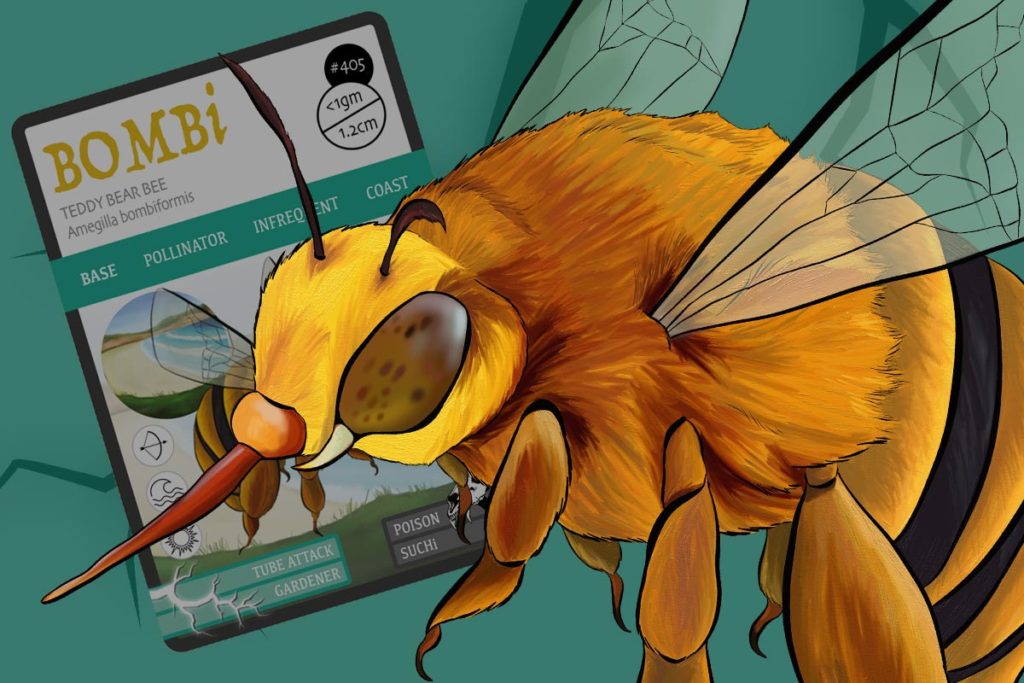The Teddy bear bee (Amegilla bombiformis) is BOMBi – a Pollinator species from the Coast BiOME
- Also known as the Golden-haired mortar bee – a solitary bee endemic to Australian coastal habitats.
- BOMBi is a large bee, growing up to 15mm long.
- A Pollinator species, the Teddy bear bee helps many of our native plants to grow through spreading pollen from flower to flower!
BOMBi is known as the Teddy bear bee for the thick golden-brown hair on its body, giving it a fluffy and friendly appearance! As they age however, BOMBi often go bald like old men! The hair on the top of their thorax becomes thin and reveals a black bald spot.
Like many native bees, they do not have a stinger, and are found along the Eastern coast of Australia, preferring lush coastal habitats with plenty of different flowering plant species.
Unlike the European honeybees you may know, BOMBi lives in shallow burrows in the ground! Rather than making a hive and living in a group with a queen, BOMBi females are independent and make their own small nests in the ground. They will lay several eggs in separate small chambers in their burrow.
They also do not make honey!

THE TEDDY-BEAR BEE IS A BUZZY BEE
BOMBi uses ‘buzz pollination’, a technique involving vibrating their bodies at a certain frequency to coax the flower into releasing its pollen. Certain native flowers will only release pollen if buzz pollinated by BOMBi or the Blue-Banded Bee.
They have very thick fur on their rear legs, where pollen accumulates, and are experts at reaching into long, tubular flowers with their long, sticky tongues.
BOMBi will nest in gardens, dried creek beds, and even under houses. So keep an eye out for them in your backyard!
BOMBi is quite resilient, yet is threatened by habitat loss and pesticide use. Rangers can help BOMBi in the wild by making sure there’s a variety of native flowering plants in their backyards, choosing not to use pesticides (poison) on their gardens, and joining in on the Native Pollinator Count, which happens in backyards across Australia in Autumn and Spring each year!
THE ANiMOZ STORY…
“There is a salty tang to the air as BOMBi starts his morning rounds. Living along the eastern Coast makes that common, but it’s not the ocean he is interested in. His TUBE ATTACK helps him fulfil his primary Superpower: GARDENER, as he plays a critical role in this seaside BiOME. BOMBi is a Pollinator, helping native flowers to be fertilised whilst feeding himself at the same time. But danger is nearby, as a swarm of SUCHi approach! He quickly hovers above the petals he was poised upon, and makes his getaway…”
Have you ever seen a BOMBi in the wild? Make sure to share your photos and tag #wildANiMOZ!

